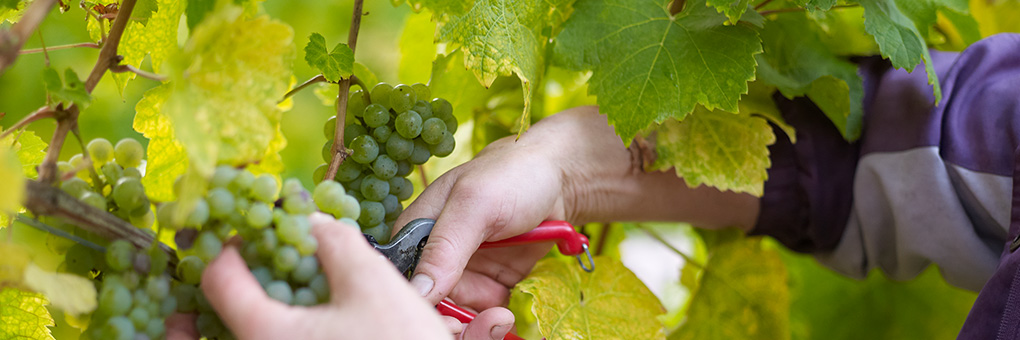
The 2016 vintage is surprisingly diverse due to extreme differences in the growth cycles of the plots and vineyards along the Mosel, the Saar and the Ruwer.
Erratic weather conditions lead to extremely diverse 2016 vintage
Trier, March 9th 2017 – The annual growth cycle of the vines has rarely varied so much across the individual sites and plots as it did in the past year. While vines on some sites were already flowering, others were just seeing the onset of bud break. “Even as an experienced enologist, I still find myself on an emotional roller coaster every wine year: hail storms, weeks of hot summer weather with no rain, outbreaks of pests or diseases – our thoughts are with the vines throughout the year,” Dr. Karsten Weyand says, Estate Director of Bischöfliche Weingüter Trier.
But the nerve-wracking work ultimately pays off, as seen most recently at the 67th Berlin International Film Festival, the Berlinale, where the 2015 Ayler Riesling Kabinett dry was selected as an Official Wine. All wines served at the Berlinale galas, receptions and in the lounges were sourced exclusively from German vineyards. This year marked the second time (the first time was in 2013) that a Riesling from Bischöfliche Weingüter Trier has been selected.
Also in the last year, Bischöfliche Weingüter Trier successfully completed an extensive quality and safety assessment of the Germany leading certification body for management systems, also called DQS (Deutsche Gesellschaft zur Zertifizierung von Qualitätssicherungssystemen) in German. On December 14th 2016, Bischöfliche Weingüter Trier obtained certification to EcoStep standards, a quality management system for the wine sector that was largely developed at Geisenheim University. The certificate officially confirms that the operations of the estate are eco-friendly, in compliance with regulations and maintain high standards of quality in addition to meeting the core requirements of ISO 9001, ISO 14001, ISO 22000 and BS 18001.
2016 growth cycle
January started off the year with temperatures that were much too warm for the season. The thermometer rarely dropped below freezing, and thus a long period of frost – crucial for pest control – failed to materialize. January, February and March were marked by frequent rainfall, leading to a high level of soil saturation. Due to a lack of sunny days in the first weeks of spring and the accompanying low temperatures, the vines experienced budbreak much later than in previous years. Shoot growth progressed only slowly.
The beginning of the summer months brought consistently warm weather; even at night temperatures reached 20 degrees Celsius. At the same time, heavy rainfall persisted. This problematic combination of excessive water and heat resulted in an explosive outbreak of diseases like downy mildew, presenting a considerable challenge for the vines and the employees. However, it was possible to contain the spread of the disease thanks to the early detection and the decisive intervention of vineyard workers.
The most diverse vintage in years
As a result of the extreme weather conditions, flowering was late and extended throughout June. What was most striking and unusual was how the growth of the vines varied from one vineyard to another. The differences in the sites between Ayl and Bernkastel have rarely been as pronounced as in 2016. “We are expecting to see an extremely varied and full of character vintage as we have never seen before,” Dr. Karsten Weyand says, underscoring the impact of the weather on the wine.
From August the weather calmed down and a long sunny and dry phase began. The high temperatures and the abundant water supply in the soil allowed the vines to flower. The individual berries increased in size, especially during the last few weeks before the harvest. Even the grapes that, up to July, had been subjected to erratic weather along the Mosel, the Saar and the Ruwer developed splendidly, maturing into small but highly concentrated berries. The sugar content of the grapes increased by more than 10 degrees Oechsle per week.
The golden season of autumn presented healthy grapes, which were very carefully harvested in the plots and sites up to early November. Currently, the majority of the musts is still fermenting in the casks, but the cellar master Johannes Becker, relying on his decades of experience, predicts a “Riesling-typical vintage with a fruity and fresh character that will make itself heard.”
